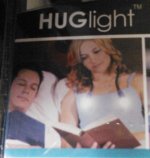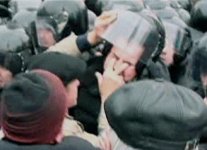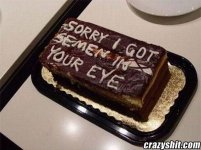You are using an out of date browser. It may not display this or other websites correctly.
You should upgrade or use an alternative browser.
You should upgrade or use an alternative browser.
Funny pic/gif thread...
- Thread starter dfweyer
- Start date
Kilroy was here
>>>
>>>
>>>
>>>
>>>
>>>
>>>
>>>
>>>
>>>
>>> He is engraved in stone in the National War Memorial in Washington, DC,
>>> back in a small alcove where very few people have seen it.
>>> For the WWII generation, this will bring back memories.
>>> For you younger folks, it's a bit of trivia that is a part of our American history.
>>> Anyone born in 1913 to about 1950, is familiar with Kilroy.
>>> No one knew why he was so well known, but everybody seemed to get into it.
>>> So who was Kilroy?
>>>
>>>
>>>
>>>
>>>
>>> In 1946 the American Transit Association, through its radio program,
>>> "Speak to America," sponsored a nationwide contest to
>>> find the real Kilroy, offering a prize of a real trolley car to the person
>>> who could prove himself to be the genuine article.
>>> Almost 40 men stepped forward to make that claim,
>>> but only James Kilroy from Halifax, Massachusetts,
>>> had evidence of his identity.
>>>
>>>
>>>
>>> 'Kilroy' was a 46-year old shipyard worker during the
>>> war who worked as a checker at the Fore River Shipyard
>>> in Quincy. His job was to go around and check on the
>>> number of rivets completed. Riveters were on piecework and
>>> got paid by the rivet. He would count a block of rivets and
>>> put a check mark in semi-waxed lumber chalk,
>>> so the rivets wouldn't be counted twice.
>>> When Kilroy went off duty, the riveters would erase the mark.
>>> Later on, an off-shift inspector would come through
>>> and count the rivets a second time,
>>> resulting in double pay for the riveters.
>>>
>>>
>>>
>>> One day Kilroy's boss called him into his office.
>>> The foreman was upset about all the wages being paid
>>> to riveters, and asked him to investigate. It was then
>>> he realized what had been going on. The tight spaces he
>>> had to crawl in to check the rivets didn't lend themselves to
>>> lugging around a paint can and brush, so Kilroy decided to
>>> stick with the waxy chalk. He continued to put his check
>>> mark on each job he inspected, but added
>>> 'KILROY WAS HERE'
>>> in king-sized letters next to the check, and eventually
>>> added the sketch of the chap with the long nose peering
>>> over the fence and that became part of the Kilroy message.
>>>
>>>
>>>
>>> Once he did that, the riveters stopped trying to wipe
>>> away his marks. Ordinarily the rivets and chalk marks
>>> would have been covered up with paint. With the war on,
>>> however, ships were leaving the Quincy Yard so fast
>>> that there wasn't time to paint them. As a result,
>>> Kilroy's inspection "trademark" was seen by thousands of
>>> servicemen who boarded the troopships the yard produced.
>>>
>>>
>>>
>>> His message apparently rang a bell with the servicemen,
>>> because they picked it up and spread it all over
>>> Europe and the South Pacific.
>>>
>>>
>>>
>>> Before war's end, "Kilroy" had been here, there,
>>> and everywhere on the long hauls to Berlin and Tokyo.
>>> To the troops outbound in those ships, however,
>>> he was a complete mystery; all they knew for sure was
>>> that someone named Kilroy had "been there first."
>>> As a joke, U.S. servicemen began placing the graffiti
>>> wherever they landed, claiming it was
>>> already there when they arrived.
>>>
>>>
>>>
>>> Kilroy became the U.S. super-GI who had always
>>> "already been" wherever GIs went. It became a challenge
>>> to place the logo in the most unlikely places imaginable
>>> it is said to be atop Mt. Everest, the Statue of Liberty,
>>> the underside of the Arc de Triomphe,
>>> and even scrawled in the dust on the moon.
>>>
>>>
>>>
>>> As the war went on, the legend grew. Underwater demolition
>>> teams routinely sneaked ashore on Japanese-held Islands in the
>>> Pacific to map the terrain for coming invasions by
>>> U.S. troops (and thus, presumably, were the first GI's there).
>>> On one occasion, however, they reported seeing
>>> enemy troops painting over the Kilroy logo!
>>>
>>>
>>>
>>> In 1945, an outhouse was built for the exclusive use of Roosevelt,
>>> Stalin, and Churchill at the Potsdam conference.
>>> Its' first occupant was Stalin, who emerged and
>>> asked his aide (in Russian), "Who is Kilroy?"
>>>
>>>
>>>
>>> To help prove his authenticity in 1946, James Kilroy
>>> brought along officials from the shipyard and some
>>> of the riveters. He won the trolley car, which he gave to
>>> his nine children as a Christmas gift and set it up as a
>>> playhouse in the Kilroy yard in Halifax, Massachusetts.
>>>
>>>
>>>
>>> And The Tradition Continues...
>>>
>>>
>>> EVEN Outside Osama Bin Ladin's House!!!
>>>
>>>
>>>
>>> Share This Bit Of Historic Humor
>>> With All Your Friends!
>>>
>>>
>>>
>>>
>>>
>>>
>>>
>>>
>>>
>>>
>>>
>>>
>>>
>>>
>>>
>>> =
>>>
>>>
>>>
>>>
>>>
>>>
>>>
>>>
>>>
>>>
>>>
>>> He is engraved in stone in the National War Memorial in Washington, DC,
>>> back in a small alcove where very few people have seen it.
>>> For the WWII generation, this will bring back memories.
>>> For you younger folks, it's a bit of trivia that is a part of our American history.
>>> Anyone born in 1913 to about 1950, is familiar with Kilroy.
>>> No one knew why he was so well known, but everybody seemed to get into it.
>>> So who was Kilroy?
>>>
>>>
>>>
>>>
>>>
>>> In 1946 the American Transit Association, through its radio program,
>>> "Speak to America," sponsored a nationwide contest to
>>> find the real Kilroy, offering a prize of a real trolley car to the person
>>> who could prove himself to be the genuine article.
>>> Almost 40 men stepped forward to make that claim,
>>> but only James Kilroy from Halifax, Massachusetts,
>>> had evidence of his identity.
>>>
>>>
>>>
>>> 'Kilroy' was a 46-year old shipyard worker during the
>>> war who worked as a checker at the Fore River Shipyard
>>> in Quincy. His job was to go around and check on the
>>> number of rivets completed. Riveters were on piecework and
>>> got paid by the rivet. He would count a block of rivets and
>>> put a check mark in semi-waxed lumber chalk,
>>> so the rivets wouldn't be counted twice.
>>> When Kilroy went off duty, the riveters would erase the mark.
>>> Later on, an off-shift inspector would come through
>>> and count the rivets a second time,
>>> resulting in double pay for the riveters.
>>>
>>>
>>>
>>> One day Kilroy's boss called him into his office.
>>> The foreman was upset about all the wages being paid
>>> to riveters, and asked him to investigate. It was then
>>> he realized what had been going on. The tight spaces he
>>> had to crawl in to check the rivets didn't lend themselves to
>>> lugging around a paint can and brush, so Kilroy decided to
>>> stick with the waxy chalk. He continued to put his check
>>> mark on each job he inspected, but added
>>> 'KILROY WAS HERE'
>>> in king-sized letters next to the check, and eventually
>>> added the sketch of the chap with the long nose peering
>>> over the fence and that became part of the Kilroy message.
>>>
>>>
>>>
>>> Once he did that, the riveters stopped trying to wipe
>>> away his marks. Ordinarily the rivets and chalk marks
>>> would have been covered up with paint. With the war on,
>>> however, ships were leaving the Quincy Yard so fast
>>> that there wasn't time to paint them. As a result,
>>> Kilroy's inspection "trademark" was seen by thousands of
>>> servicemen who boarded the troopships the yard produced.
>>>
>>>
>>>
>>> His message apparently rang a bell with the servicemen,
>>> because they picked it up and spread it all over
>>> Europe and the South Pacific.
>>>
>>>
>>>
>>> Before war's end, "Kilroy" had been here, there,
>>> and everywhere on the long hauls to Berlin and Tokyo.
>>> To the troops outbound in those ships, however,
>>> he was a complete mystery; all they knew for sure was
>>> that someone named Kilroy had "been there first."
>>> As a joke, U.S. servicemen began placing the graffiti
>>> wherever they landed, claiming it was
>>> already there when they arrived.
>>>
>>>
>>>
>>> Kilroy became the U.S. super-GI who had always
>>> "already been" wherever GIs went. It became a challenge
>>> to place the logo in the most unlikely places imaginable
>>> it is said to be atop Mt. Everest, the Statue of Liberty,
>>> the underside of the Arc de Triomphe,
>>> and even scrawled in the dust on the moon.
>>>
>>>
>>>
>>> As the war went on, the legend grew. Underwater demolition
>>> teams routinely sneaked ashore on Japanese-held Islands in the
>>> Pacific to map the terrain for coming invasions by
>>> U.S. troops (and thus, presumably, were the first GI's there).
>>> On one occasion, however, they reported seeing
>>> enemy troops painting over the Kilroy logo!
>>>
>>>
>>>
>>> In 1945, an outhouse was built for the exclusive use of Roosevelt,
>>> Stalin, and Churchill at the Potsdam conference.
>>> Its' first occupant was Stalin, who emerged and
>>> asked his aide (in Russian), "Who is Kilroy?"
>>>
>>>
>>>
>>> To help prove his authenticity in 1946, James Kilroy
>>> brought along officials from the shipyard and some
>>> of the riveters. He won the trolley car, which he gave to
>>> his nine children as a Christmas gift and set it up as a
>>> playhouse in the Kilroy yard in Halifax, Massachusetts.
>>>
>>>
>>>
>>> And The Tradition Continues...
>>>
>>>
>>> EVEN Outside Osama Bin Ladin's House!!!
>>>
>>>
>>>
>>> Share This Bit Of Historic Humor
>>> With All Your Friends!
>>>
>>>
>>>
>>>
>>>
>>>
>>>
>>>
>>>
>>>
>>>
>>>
>>>
>>>
>>>
>>> =
>>>
Thats cool. Even the Canadians, Brits and everyone else saw the Kilroy graffiti.
My Father was quite familiar with it. He told me that it was a common sight to be marching down a dirt road in between somewhere and nowhere and see it painted where ever it could be. Everyone must have gotten into the act, even tho they didn't know where it originated from.
Know we know, the true story behind it.
Looks like Moe from the Stooges is alive and well. The Cop obviously wasn't fast enuff to put his hand by his nose to stop it.
My Father was quite familiar with it. He told me that it was a common sight to be marching down a dirt road in between somewhere and nowhere and see it painted where ever it could be. Everyone must have gotten into the act, even tho they didn't know where it originated from.
Know we know, the true story behind it.
Looks like Moe from the Stooges is alive and well. The Cop obviously wasn't fast enuff to put his hand by his nose to stop it.
Last edited:
I knew that it was an elbow right away. Cause like, no women has rectangular nips.
I was going to say...
I was going to say that she needs to have that checked by a doctor :thumbup: :thumbup:
:thumbup: 
Jaden
I knew that it was an elbow right away. Cause like, no women has rectangular nips.
I was going to say that she needs to have that checked by a doctor :thumbup:
Jaden
_________________________


Damn, that looks like an old New Orleans neighborhood.
.......................
Sigh, reminds me of riot training for Northern Ireland in the 80's
How come I have not seen this before. Are you all slacking on this thread?? lol
http://youtu.be/6en_W3hhZBg
Would be nice to have her at the mosconi wouldn't it.
I love the TPB, I was lucky enough to have seen them live a couple of years ago and it was by far one of the best times ever. If they make it back around I will definitely go back.












